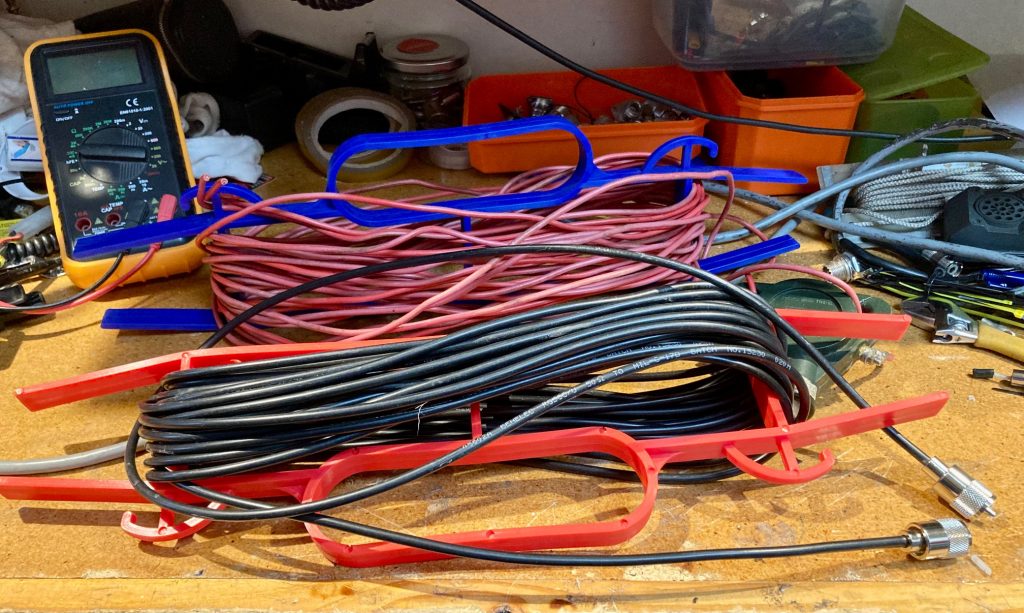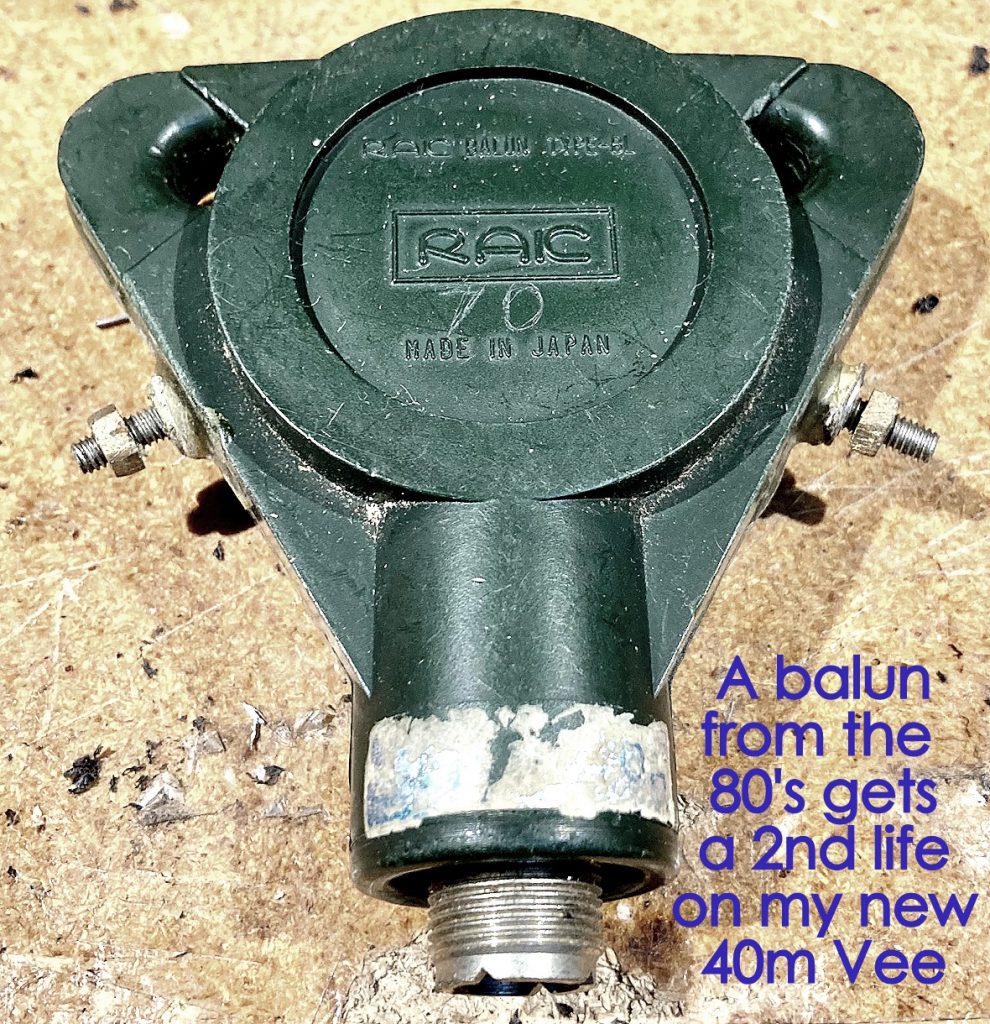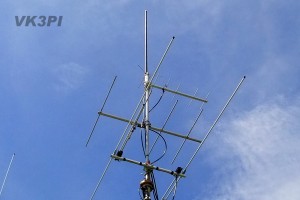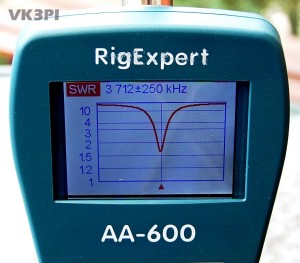One of the great things about having more time to concentrate on radio is the ability to do some serious planning on construction, rig and antenna projects.
Then applying the planning to actually produce results.
One of the major activities here has been the movement of radio masts, construction of new wire antennae and refurbishment of VHF/UHF antennae that have been in the air for some time.

This week the new 40 metre inversted vee has been constructed, having found some very robust PVC covered multi-strand copper wire and a roll of brand new MILSPEC RG58 coaxial cable.
Having weather proofed all connection points today, I should have the antenna in the air later this week.
One of the major benefits of spending some months installing storage racks in the garage and sorting a variety of equipment sourced over many years is that I am finding hidden “gems” every week.
It is just like having Christmas 52 weeks of the year.
One such find, which has been used in the construction of the 40m inverted vee, was a RAC Balun, first purchased on the 1980’s from Dick Smith Electronics.

The RAC Baluns have proven to be very reliable given their sturdy construction. Obviously when I used this one years ago the wire terminals and SO239 connector were weatherproofed extremely well, as you can see from the photograph above that the metal parts are in great condition. Truth be known I have found a couple of others as well, which will be applied to other wire antenna projects.
Let’s see how the antenna performs with this Balun when it is up in the air.

On the subject of weatherproofing antenna’s, self amalgamating tape is a must in your tool box next to very good quality insulation tape.
As you can see from the photograph above, the refurbished Diamond X200 cable feed has been completely sealed with self amalgamating tape. When applying the tape, you can stretch the tape by 2 or three times its length and by carefully wrapping the tape over itself, when cured it will form a waterproof bond over your coax connector.
This antenna had been up in the air for over 8 years and when I removed the old self amalgamating tape, the PL259 connector looked brand new as if I had just purchased it off the shelf.
The insulation tape is used for two things.
Firstly the Diamond antenna’s originally have a fibreglass radome with a white “paint” within the radome.
If not covered, over time with the influence of the sun, together with heating and cooling, condensation will occur and water droplets will run into the bottom of the antenna, causing considerable antenna resonance issues.
This was witnessed when repairing an antenna and finding a water saturated piece of foam in the base of the antenna and water streaming from the base when disconnected.
My suggestion is that by using some good quality insulation tape i.e. Nitto these issues can be avoided.
My waterproofing method is to begin at the base of the antenna (see photograph above) and wind the insulation tape up to the top of the antenna at a 45 degree angle. Then from the top of the antenna wind another length in the opposite direction at 45 degrees to the base of the antenna.
With the attention to waterproofing detail on the antenna/coaxial connector, and by never exceeding the power rating of the antenna, you should have many, many years of problem free operations.
Now to finding some more hidden gems for the next project!




